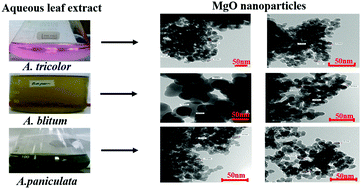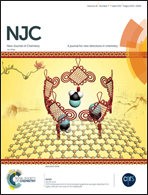Biosynthesis and characterization of MgO nanoparticles from plant extracts via induced molecular nucleation
Abstract
Plant based green synthesis approaches are gaining prominence due to their simplicity, cost-effectiveness, ecological friendliness, commercial scalability, efficiency in large scale synthesis, and versatility in harnessing a wide range of value added products. Leaf extract based synthesis of metal oxide nanoparticles facilitates the production of non-toxic nanoparticles due to the presence of various phytochemicals and biochemical compounds that are beneficial for biological and pharmaceutical applications. In the current study, leaf extracts from three different plants: Amaranthus tricolor, Andrographis paniculata and Amaranthus blitum were used for the synthesis of magnesium oxide (MgO) nanoparticles. The biophysical characteristics of the synthesized MgO nanoparticles were investigated using ultraviolet-visible spectra and dynamic light scattering techniques. Fourier Transform Infrared (FTIR) spectroscopy and Transmission Electron Microscopy (TEM) were also used to identify and analyze the functional groups accompanying the extracts and the morphology of the nanoparticles respectively. The absorbance at 320 nm from UV-visible spectroscopy indicates the formation of metal oxide in the sample. Key parameters affecting the synthesis process, including temperature, heating time and precursor concentration, were investigated to probe their effects on the stability and particle size distribution of the nanoparticles. The FTIR results showed that the modifications in the functional groups are responsible for the formation of nanoparticles and the peak between 660 and 540 cm−1 confirms the presence of magnesium oxide. The TEM results showed that all the samples demonstrated stability with a particulate size range of 18–80 nm. The process of smaller MgO nanoparticle formation due to utilization of different precursors and leaf extracts was also explained. Overall, the green synthesis approach demonstrated potential for developing highly stable MgO nanoparticles with tight particle size distribution from different plant materials for applications in biosensing and therapeutic development.



 Please wait while we load your content...
Please wait while we load your content...